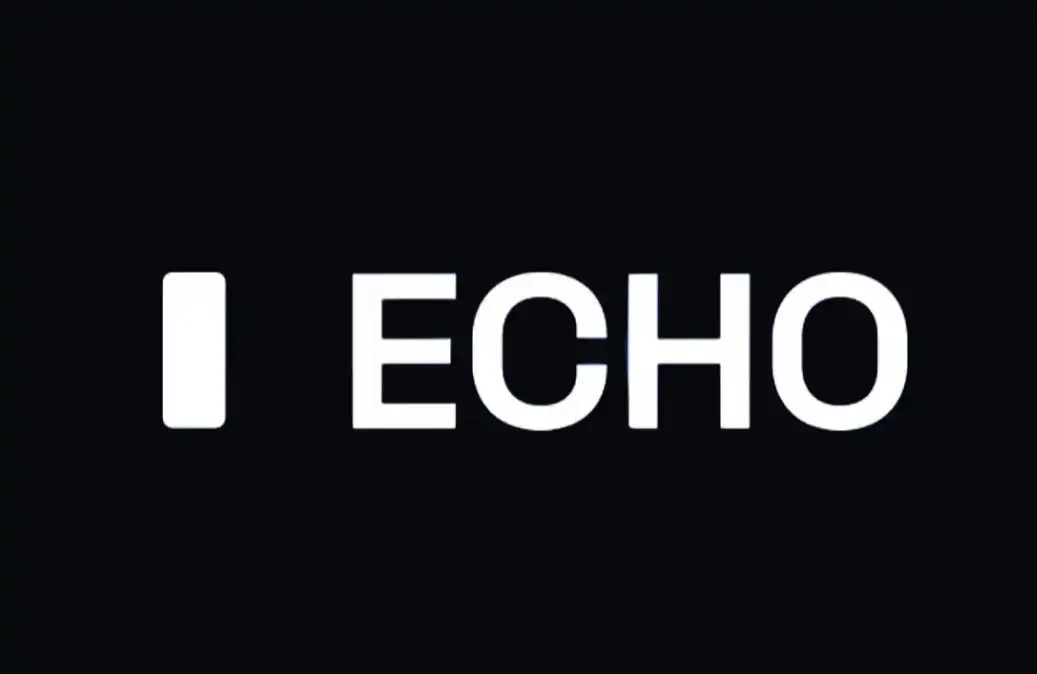Key to Ethereum's scalable future: zkEVM Track's 6 Potential projects
原文标题:《 盘点以太坊可扩展未来的关键:zkEVM 赛道的 6 大潜力项目 》
Original article by Gaurang (GT) Torvekar
Cindy SophonLabs
Layer 2 scaling is one of the most critical issues for the blockchain industry because Ethereum's first Layer (also known as Layer 1 or L1) is implemented by Ethereum itself, the smart contract platform that runs on top of the Ethereum blockchain. However, due to throughput limitations and high transaction fees associated with Ethereum's original architecture, a second layer of scaling solutions needed to be built to increase transaction speed and reduce costs. Many good Web3 companies developed strong solutions before the next bull market. Because there were a lot of issues in early 2022 Ethereum L1 was blocked by thousands of transactions, resulting in a lot of blocking experiences for NFT buyers and Defi traders, and making zkEVMs one of the most innovative and popular solutions! Layer 2 increases the scalability of the entire Ethereum system by removing transactions from the Ethereum main chain, allowing the Ethereum main chain to focus on more basic transaction processing, while more advanced transactions can be processed on L2.
What is zkEVM?
zkEVM (Zero-Knowledge Execution Environment Virtual Machine) is an Ethereum virtual machine that uses zero-knowledge proof to protect privacy.
zkEVM allows smart contracts to be executed in a way that protects the privacy of the terms of the contract and the data involved in the contract. This is achieved through a zero-knowledge proof, which is an encrypted proof that allows one party to prove to another that a statement is true without disclosing any other information about the statement. The basic idea of zkEVM is that during the execution of Ethereum smart contracts, some data can be processed and verified without compromising the original data. To be specific, zkEVM uses zero-knowledge proof technology to keep original data private and verify the correctness of execution results.
The introduction of zkEVM can effectively improve the privacy and performance of smart contracts. With zkEVM, users can execute smart contracts that contain secret calculations at a faster rate while protecting privacy. This is important for sensitive applications such as finance and healthcare. Currently zkEVM is still in the research and development stage, but it has already attracted a lot of attention and investment. zkEVM is expected to become an integral part of the Ethereum ecosystem over the next few years. There are a wide variety of zkEVM solutions, and while each of these types strives to build the best zkEVM, they all try to achieve this goal in different ways.
Type 1 (Full Ethereum - equivalent) PSE - These ZkevMs do not change any part of the Ethereum system and strive for full equivalence. Examples include Taiko and.
Type 2 (Full EVM -- equivalent) Scroll -- These ZkevMs look exactly the same as Ethereum, but differ in aspects such as data structure and state tree. Examples include and Polygon Hermez.
Type 2.5 (EVM -- equivalent to gas cost except) -- these ZkevMs significantly increase the cost of gas to satisfy specific operations in EVMs that are very difficult to zk justify. These can break some developer tools, so developers need to be careful when deploying Dapps here.
Type 3 (almost equivalent to EVM) - These ZkevMs are almost equivalent to EVMs, but they have to make some sacrifices and remove features that are difficult to implement in the zkEVM system. Very few projects want to be Type 3, and until they migrate to Type 2.5 or Type 2, they should be considered a transition state
Type 4 (high-level language equivalent) -- These ZkevMs are compatible at language levels (Solidity, Vyper). They took smart contracts written in these languages and made it possible to compile in another language used to build the zkEVM system. Currently, zkSync is one such zkEVM implementation.
For a more in-depth interpretation, check out Vitalik's blog for a more in-depth technical explanation and the pros and cons of each type of zkEVM.
What is zk-rollup?
zk-rollup is a Layer 2 extension solution for blockchain networks. It allows transactions to be processed off-chain and then "aggregated" into a single on-chain transaction, thereby reducing the load on the main blockchain and increasing transaction throughput.
In zk-rollup, the transaction is processed by a set of validators responsible for ensuring that the transaction is correct. These validators create a zero-knowledge proof, which is a cryptographic proof that proves a statement is true but does not reveal any additional information about the statement. Proof of zero knowledge is then added to on-chain transactions, allowing the transaction to be verified without having to process each transaction on the main blockchain.
Differences between zkEVM and zk-rollups
One of the main differences between zk-rollups and zkEVMs is that zk-rollup focuses on extensibility, while zkEVM focuses on privacy. zk-rollup allows large volumes of transactions to be processed off-chain while still maintaining the security and integrity of the Ethereum main chain. zkEVM, on the other hand, allows smart contracts to be executed in a privacy-protecting manner, allowing private, confidential transactions to be created on the Ethereum platform.
zk-rollup and zkEVM are both significant innovations that help improve Ethereum's scalability and privacy. They all have the potential to significantly enhance the capabilities of the Ethereum platform and make it more useful for a wide range of applications.
Now that you know the basics of zkEVM and zk-rollups, let's take a closer look at the different projects that implemented zkEVM.
zkSync
zkSync is a Tier 2 extension solution for Ethereum designed to increase the scalability and speed of the Ethereum network. It is based on zero-knowledge proof, allowing transactions to be verified without compromising the underlying data. This allows zkSync to process off-chain transactions, which means they are not recorded on the Ethereum blockchain itself. Instead, they are recorded in a separate, down-chain data structure called a "Merkle tree." A key feature of zkSync is its use of "optimistic" transport, which allows users to send and receive transactions without waiting for them to be confirmed on the Ethereum blockchain. This significantly reduces transaction time and allows for higher transaction throughput.
In addition to using zero-knowledge proof and optimistic transport, zkSync utilizes several other techniques to improve scalability and security. These include signature aggregation, which allows multiple signatures to be compressed into a single signature, and multi-chain support, which helps zkSync interact with other blockchain networks.
Overall, zkSync aims to provide a scalable and secure platform for decentralized applications (DApps) and other Ethereum-based projects. By allowing faster and more efficient transactions, it aims to make it easier for developers to build and deploy DApps, and for users to interact with them.
One of the main challenges facing zkSync is the need to balance scalability and security. While using zero-knowledge proof and other techniques allows for faster and more efficient transactions, it also introduces additional complexity and potential vulnerabilities. As a result, zkSync constantly strives to improve and refine its technology to ensure it is as safe and robust as possible.
Despite these challenges, zkSync has made significant progress since its launch in 2020, and has already gained a strong following among developers and users. Its unique approach to scaling Ethereum has attracted considerable attention and investment, and has the potential to play an important role in the future development of the Ethereum ecosystem.
Starkware StarkNet
Starkware is a project that has developed a protocol called StarkNet. StarkNet is a Tier 2 extension solution designed to improve the efficiency and scalability of blockchains, especially those using smart contracts.
A key feature of StarkNet is its use of STARKs, a zero-knowledge proof system that allows users to prove the correctness of their calculations without revealing the underlying data. This allows for greater privacy and security on the network, and the ability to perform complex calculations without the need for a trusted third party.
StarkNet also makes use of sharding technology, which allows the blockchain to be split into multiple smaller chains or "shards" that can be processed in parallel. This allows for greater throughput and faster transaction times because each shard can be processed independently of the others. One of StarkNet's main goals is to be able to create decentralized finance (DeFi) applications at scale. DeFi applications often rely on smart contracts and other complex calculations, which can strain the underlying blockchain and limit its scalability. By using StarkNet, DeFi developers can create more efficient and scalable applications to handle larger volumes of transactions.
StarkNet is already integrated with several popular blockchains, including Ethereum, Binance Smart Chain, and Polkadot. This allows developers to use StarkNet to build DeFi applications on top of these platforms without having to worry about scalability. In addition to focusing on DeFi, StarkNet is used in a variety of other applications, including supply chain management, voting systems, and even medical research. The protocol's versatility and extensibility make it an attractive choice for a wide range of use cases.
Overall, Starkware's StarkNet protocol represents a significant advance in blockchain technology. Its use of STARKs and sharding can improve efficiency, privacy and scalability, making it an ideal solution for a variety of applications, especially those in the DeFi space.
Polygon Hermez
The Polygon blockchain project recently introduced a new technology called Hermez zkEVM. The technology is designed to improve the scalability and privacy of the Ethereum blockchain.
Hermez zkEVM aims to solve the scalability problem of the Ethereum blockchain by using zero-knowledge proof to enable faster and cheaper transactions on the Ethereum network. In the context of Hermez zkEVM, zero-knowledge proof can be used to verify the correctness of a transaction without disclosing specific details. This allows for faster transaction processing and reduced fees because the entire network is not required to validate each transaction.
In addition to improving scalability, Hermez zkEVM also enhances the privacy of the Ethereum network. By using zero-knowledge proof, Hermez zkEVM allows confidential transactions, hiding the exact details of the transaction from parties other than the sender and receiver. This is useful for a variety of applications, such as allowing individuals to conduct financial transactions without revealing their identities, or companies to conduct business without disclosing sensitive financial information. As mentioned earlier in the various types of zkEVM, this implementation of Polygon is compatible at the bytecode level rather than the language level.
Hermez zkEVM is a promising development for the Ethereum network and the wider blockchain community. By improving scalability and privacy, it has the potential to make the Ethereum network more attractive to a wide range of DApps and use cases. It will be interesting to see how this technology is adopted and how it affects the future development of the Ethereum network and other blockchain platforms.
Scroll
Scroll is a decentralized protocol designed to bring scalability and greater security to the Ethereum blockchain. A key feature of Scroll is its use of zk-rollups, a Layer 2 scaling solution that allows for faster and cheaper transactions while maintaining the security of the main blockchain.
In zk-rollup, transactions are bundled together and verified by smart contracts on the main blockchain. This allows for higher transaction throughput because the burden of validating each individual transaction is removed from the main chain and placed on the summary contract. Scroll is particularly focused on creating an EVM-compatible zk-rollup, which means it can support the same programming language and smart contracts as Ethereum. This is important because it allows developers to easily migrate their existing applications to Scroll networks without making any changes to their code.
Overall, Scroll is a promising project dedicated to bringing the benefits of zk-rollups into the Ethereum ecosystem. By creating EVM-compatible solutions, Scroll can provide developers with an easy way to extend their applications and take advantage of the increased security and efficiency of zk-rollups. As the Ethereum network continues to evolve and the demand for scalable solutions increases, projects like Scroll will play a vital role in the evolution of the blockchain industry.
Consensys and Infura
ConsenSys and Infura, two of the most prominent names in the Ethereum ecosystem, are working on a new version of the Ethereum Virtual Machine (EVM) called zkEVM. The project aims to improve Ethereum's scalability, which has been a major challenge for the platform.
ConsenSys and Infura are working on integrating zkEVM into the Ethereum main network, making it available to anyone on the network. This is an exciting development for the Ethereum community, as it has the potential to address some of the scalability challenges that have held back the platform in the past.
While the company has yet to release many details about the project, their approach to implementation, and other things, it's still one of the most exciting projects on developers' radar. Consensys has built some of the core infrastructure that underpins the Ethereum ecosystem, and it would not be surprising if this zkEVM implementation becomes one of the most popular implementations in the crowd.
Taiko
Taiko describes its product on its website as "Type 1 zkEVM -- fully decentralised, equivalent to Ethereum's zk-rollup". They claim that being Type 1 zkEVM is one of the main differences compared to other items on this list. They made almost no changes to the Ethereum architecture, including hash functions, state trees, or gas costs. By doing so, they can reuse the execution client implementation with as little modification as possible. One of the main advantages of using a Type 1 zkEVM like Taiko is the ease of migration without much code change. For example, you could deploy on Ethereum L1 and then migrate to Taiko. On the other hand, you can deploy on Taiko first and then migrate to any other EVM compatible chain.
zkEVM (Zero-Knowledge Execution Environment Virtual Machine) is an Ethereum virtual machine that uses zero-knowledge proof to protect privacy. It allows smart contracts to be enforced in a way that protects the privacy of the terms of the contract and the data involved in the contract. The basic idea of zkEVM is that during the execution of Ethereum smart contracts, some data can be processed and verified without compromising the original data.
Unlike zkEVM, zk-rollup is a Layer 2 extension solution that focuses on scalability rather than privacy. It allows a large number of transactions to be processed off-chain and then aggregated into a single on-chain transaction, thereby reducing the load on the main blockchain and improving transaction throughput. In zk-rollup, the transaction is processed by a set of validators and a zero-knowledge proof is created to prove that the transaction is correct. These validators are responsible for ensuring that the transaction is correct.
While zkEVM and zk-rollup have different focuses, they are both significant innovations that help improve Ethereum's scalability and privacy. They have the potential to significantly enhance the capabilities of the Ethereum platform and make it more useful for a wide range of applications.
summarize
This paper introduces 6 zkEVM projects including zkSync, Starkware StarkNet, Polygon Hermez, Scroll, Consensys, Infura, Taiko. These projects aim to improve the scalability and security of Ethereum by using zero-knowledge proof, sharding and other techniques to enable faster and more efficient transactions. Together, the development of these zkEVM projects is expected to have a significant impact on the future of the Ethereum ecosystem and blockchain technology. They are working to improve Ethereum's scalability and privacy by using zero-knowledge proof, sharding and other techniques to enable faster and more efficient transactions. The success of these projects will help push Ethereum forward, making it more competitive and making it more useful for a wide range of applications.
Original link
Welcome to join the official BlockBeats community:
Telegram Subscription Group: https://t.me/theblockbeats
Telegram Discussion Group: https://t.me/BlockBeats_App
Official Twitter Account: https://twitter.com/BlockBeatsAsia


 Forum
Forum Finance
Finance
 Specials
Specials
 On-chain Eco
On-chain Eco
 Entry
Entry
 Podcasts
Podcasts
 Activities
Activities
 OPRR
OPRR







